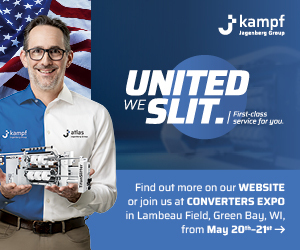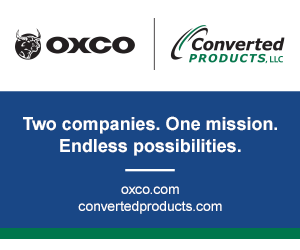Buyers & Suppliers: Can We Dance?
- Published: March 01, 2008, By By Timothy J. Walker Contributing Editor
Buying equipment is a partnership between the equipment buyers and equipment suppliers. The dance begins when a buyer has a need (and hopefully the money) for new equipment. Eventually a dance partner is found, and the two must find a way to work together. Will things turn out to each party's satisfaction?
The equipment supplier, who knows “the nuts and bolts,” provides the knowledge to build the equipment. The best equipment suppliers go a little further. After years of working with smart converters, a smart supplier's equipment will change and reflect what works and what doesn't.
The buyer-converter defines the process and equipment specifications. The converter knows his materials and, hopefully, his process — how the material interacts with the equipment. Though the supplier may have some general process knowledge, he will never know as much as the experienced converter (much like knowing how to build a race car doesn't make you a great race car driver).
Beyond process knowledge, the converter has the additional responsibilities to hire and train a staff of management, engineering, operators, and maintenance. The converter is responsible for providing and preparing the facilities to support the equipment and the production quality plan.
How should a buyer-converter work with an equipment supplier? Depending on how much the converter knows or wants to share with the equipment supplier, there are at least three options:
A. The converter orders standard equipment from a catalog.
Option A is more common when your competitive advantage is in your chemistry or business savvy rather than your process. Many converters are making a one-of-a-kind product requiring one-of-a-kind equipment. Some equipment suppliers, especially in narrow web printing, laminating, and die-cutting processes, have moved toward modular equipment that can be mixed and matched to create unique processes from catalog components.
B. The converter shares product recipes with the equipment supplier.
Option B, sharing product recipes, is the most trusting relationship but should pay off in less surprises (i.e., lower risk). By providing a clear recipe, the converter may request production performance guarantees.
The equipment supplier, seeing the recipes and intentions of the buyer-converter, must decide what performance levels he is willing to guarantee. In a recipe-sharing approach, the converter is likely to share a more generic recipe, knowing that if the equipment can make one product, it will be more likely to make the secret recipe products successfully.
C. The converter translates recipes into equipment specifications.
Option C is common when the converter will be the integrator, such as when purchasing coating, drying, and web handling equipment from different suppliers. The converter assumes more responsibility in exchange for holding on to proprietary knowledge.
Maybe it's the type of projects I've worked on, but I've found most converters opt for plan C and keep their product recipes secret. This puts more responsibility on the converter, requiring that their recipes be translated into process specifications, such as driven roller speeds, roller widths, coating viscosity and thickness, oven heating transfer coefficient, and oven lengths.
The experienced converter knows if the equipment has the desired performance capabilities, he will be able to manufacture the intended product at the intended speed.
Once the equipment is installed and the supplier is paid, the dance is over. Was it a success? If you choose the same partner for the next dance, probably so. Otherwise, you will be looking around for someone new with whom to face the music.
Web handling expert Tim Walker, president of TJWalker+Assoc., has 20+ years of experience in web processes, education, development, and production problem solving. Contact him at 651-686-5400; tjwalker@tjwa.com; www.webhandling.com.












